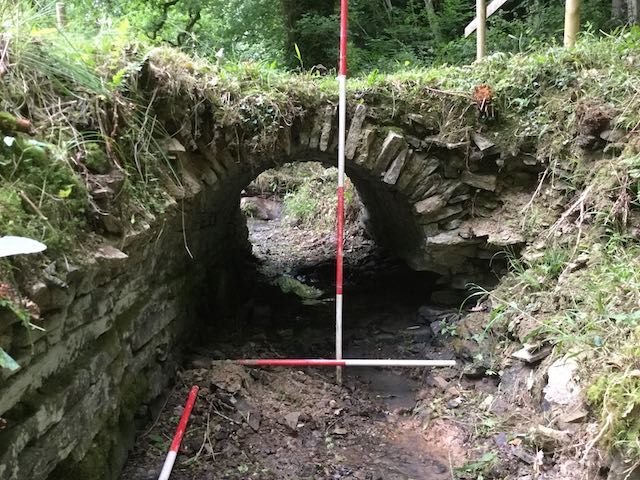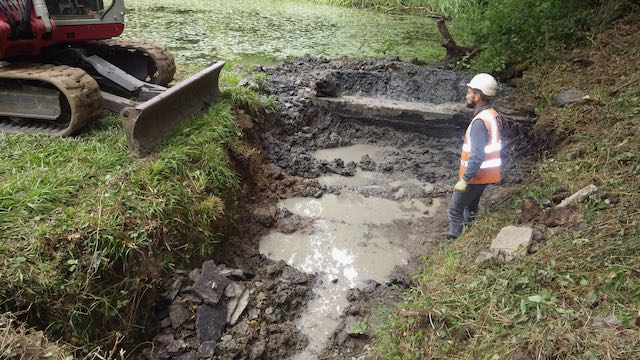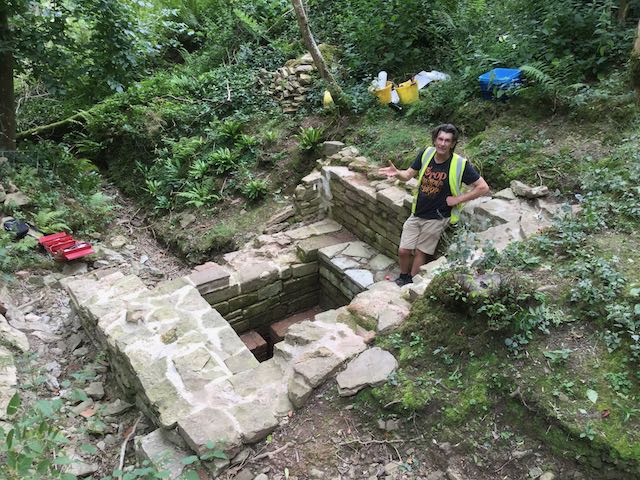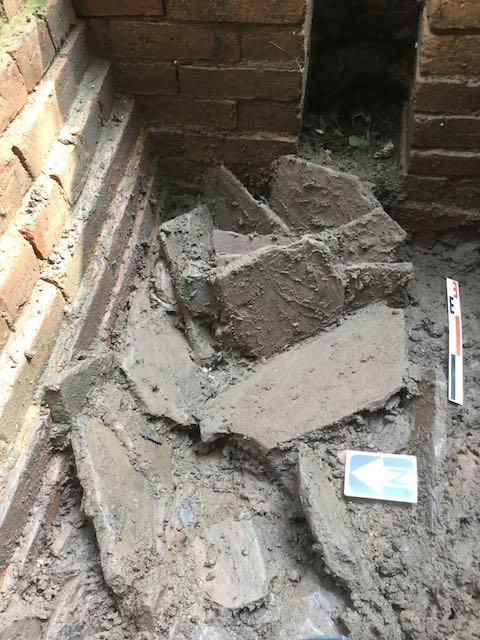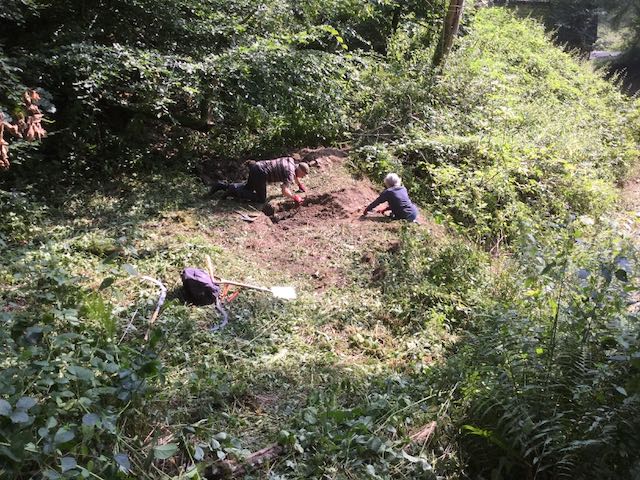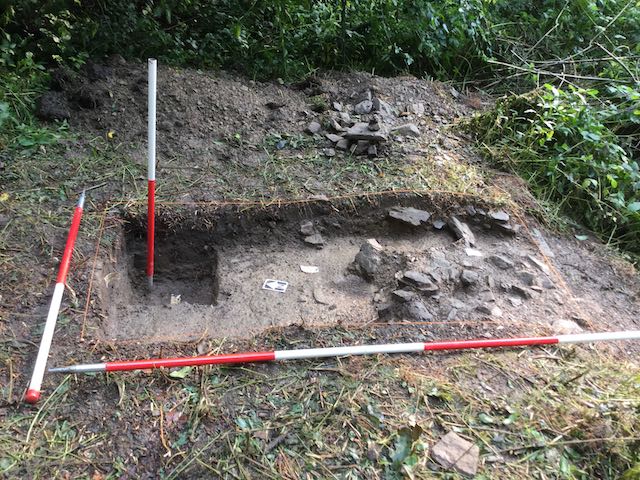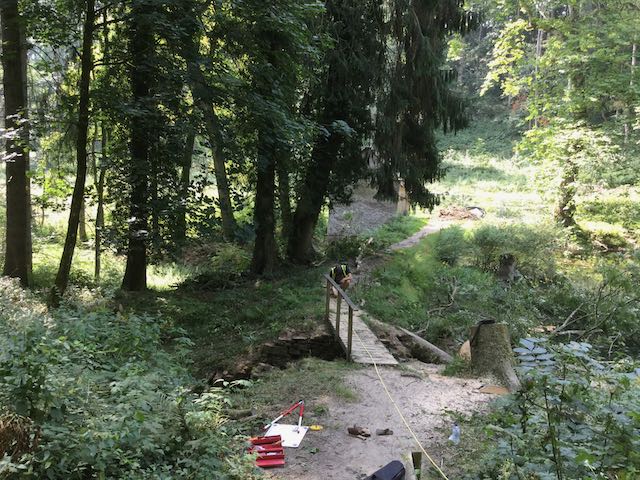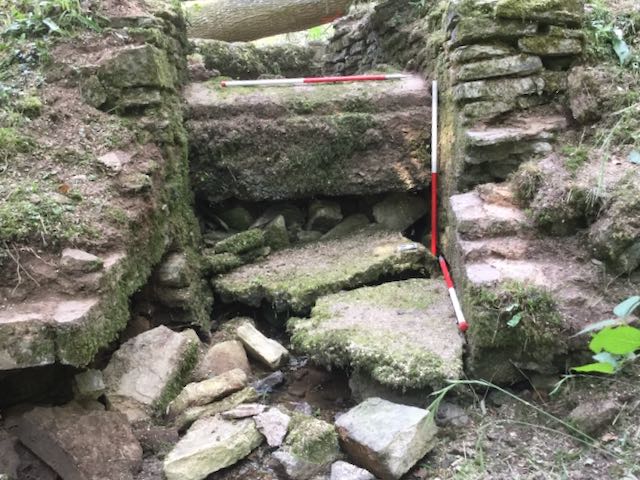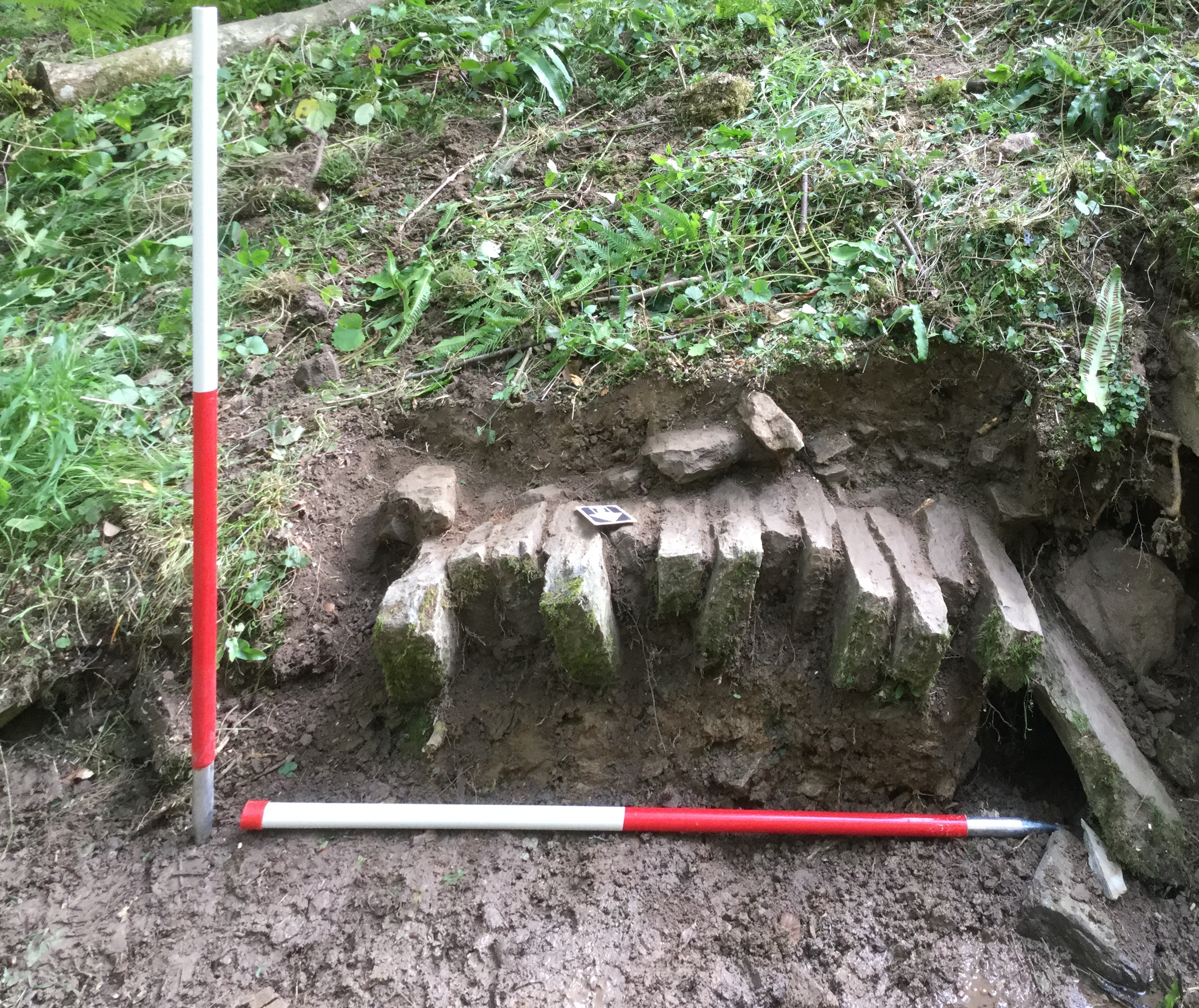Back to Projects
Click here to read about
2017 2018 2019 2021
The early months of 2020
were marked indelibly by the arrival of the Covid19 virus and the
consequent lock-down. One of the results of this was a limited programme
of archaeological investigation tied in to watching briefs on the
spillways on dams 2 and 5. The first visit was made on July 6th. to
update an earlier drawing of the channel and tunnel. Once this was
completed it was stand back and let the digger move in to clear the
channel keeping an eye open, of course, for additional traces of walling
or a brick base. Whilst on site a brief pilgrimage was made up the
valley to examine the condition of the spillway on dam 5 opposite the
gothic pump house and the state of play up at the conduit house,
partially excavated last year.
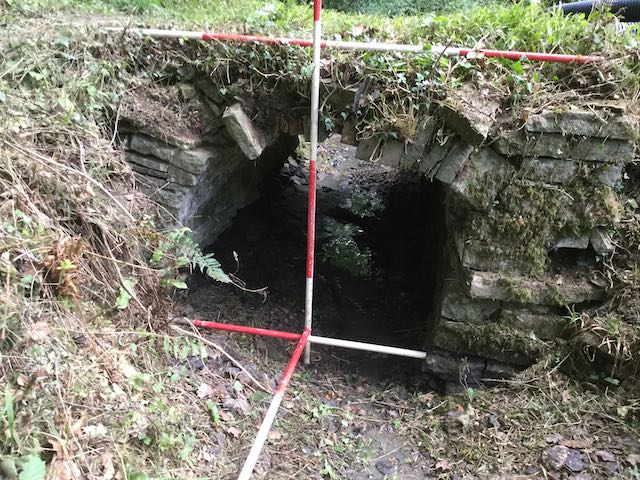
After another burst of archaeological weeding the truncated tunnel and channel are revealed....
... and once the record is updated the old channel is cleared out... nothing to report.
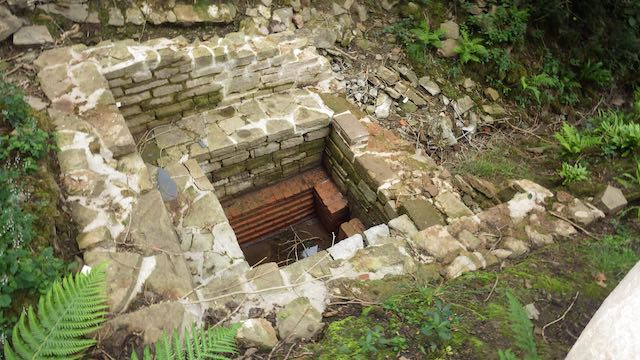
Meanwhile up the valley repairs have been undertaken to consolidate the stonework round the conduit house and the spillway on dam 5 is looking seriously overgrown.
Stage two of the work began on Monday August 10th. when Sarah and I returned for our fourth season in the valley. The local team of volunteers had been given special dispensation to rejoin us and did a splendid job on the Monday morning clearing the area around the conduit house for further exploration and examination. At the outset we had two objectives: to complete the excavation of the tank within the conduit house and to investigate the surrounding area for evidence of other structures that would explain the preponderance of ceramic roof tiles in the valley to the east. Having located the outflow pipe last year I was confident that a couple of day's digging would have bottomed the tank, uncovered evidence perhaps of the collapsed timber supports to the roof and possibly reveal the presence of good luck ' offerings' tossed into the water. Sarah began the work and it was continued valiantly by Bob but probing on the Wednesday morning lead to the alarming discovery that there was at least 80cm of silt and roof tile still to lift. As we were already under water this was just not feasible in the time available and in the absence of specialist equipment such as a pump, ladder and additional safety fencing. The situation was not helped by a torrential rain storm on Wednesday evening which partially refilled the tank.
Two further small trenches were opened to examine features in the surrounding area. Rubble was seen to have collapsed down the slope from the high ground to the north and an area 1m by 1.5m was excavated at the break of the slope to look for structures, What was uncovered was more rubble, some of it well shaped, which seemed to derive from something even further up the slope to the west. A valiant campaign of strimming mounted by the volunteers uncovered a curious flattened circular area a little further to the east. A 2m by 1m trench examined an irregular bank of rubble and clay backed by a deep deposit of topsoil. All very curious and difficult top interpret although some strange thoughts of pools based on the topography did emerge.
Down on dam 5 the volunteers did a great job of archaeological weeding to uncover the remains of the spillway, a job that was not made any easier by the fact that two trees had been felled and dropped into the pool, damaging some of the flanking walling and covering everything in a layer of sawdust. Sarah and I undertook a further clean before making a full photographic record then drawing a plan and three separate elevations to show the arrangement of the stone work. Harking back to work two years ago the volunteers also tidied up the excavated remains of the semi-circular arbour at the head of the valley and did some weeding around the grave site too.
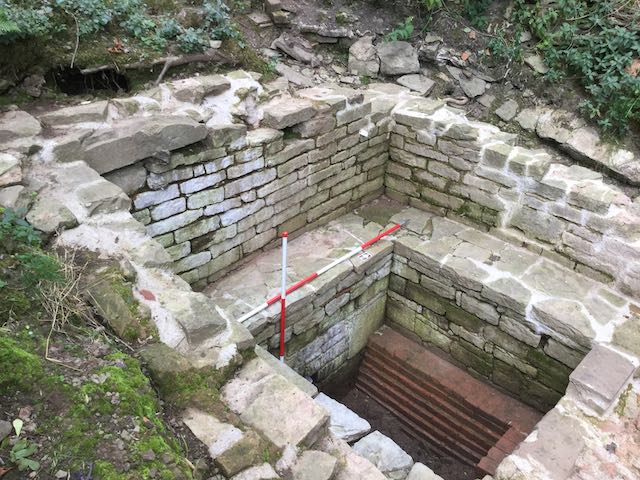
The site as left after repairs last winter but tidied up and weeded. Pontificating about exactly what we were going to discover, how wrong can you get?
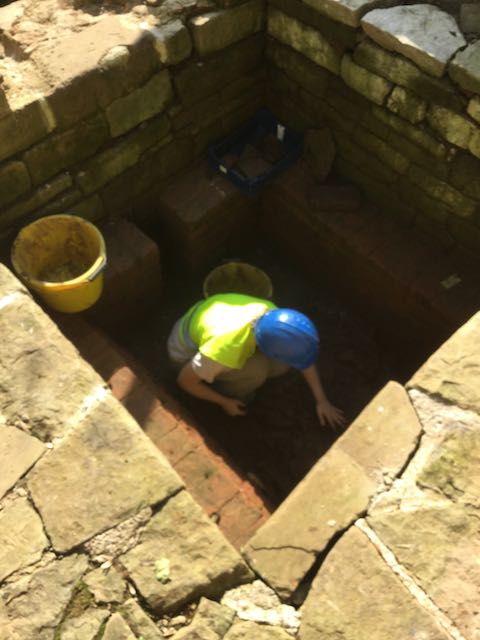
Sarah down in the pit uncovering a mass of fallen stone roof tiles.
Two volunteers make a start on the trench cut across the edge of the circular terrace.
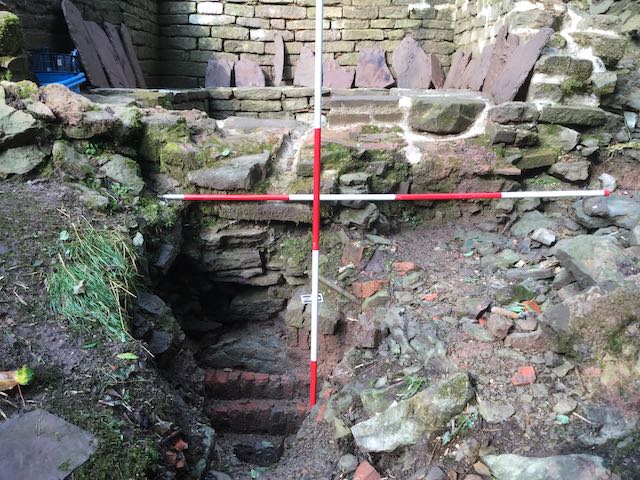
Some very useful work done looking at the lower courses of brick and stonework looking for the other end of the outflow pipe and the tank, after torrential rain, is filling up again.
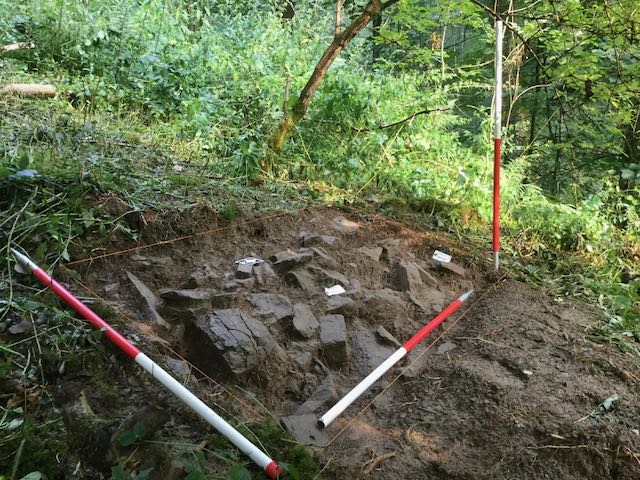
The final results of the two additional trenches: rubble galore and topsoil backing a rubble and clay bank.
On dam 5 after the big clean up the survey work is underway.
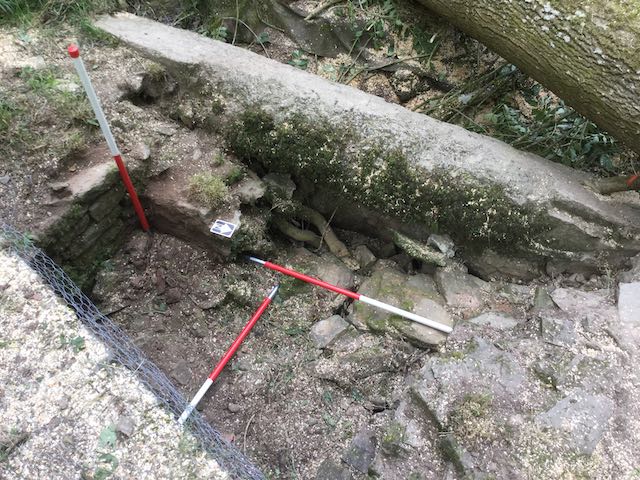
Upstream concrete barriers and the remains of a cross wall and downstream a concrete capped cascade.
Even further downstream the remains of a pitched stone surface with a distinct hump to it... explanation pending.
